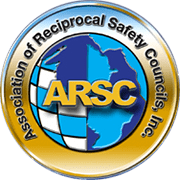By Trish Ennis CSP, ARM, CRIS
Executive Director, Colorado Safety Association
Organizations and Safety Professionals spend lots of time and resources developing safety and health documentation, for good reasons. These documents are created for a variety of purposes, including but not limited to:
- Meeting legal requirements
- Defining and documenting compliance requirements
- Providing details about safety rules and procedures
Despite the amount of time and effort put in to these documents, they are relatively dense, filled with technical language (jargon), and frequently hard to navigate. What if we focused on the psychology of how people access and read information based on the intent of that information? What if our safety documentation was designed to accommodate how people look for cues and read information?
The science of usability, or user experience (UX) is widely used in the design of software and technology. UX is science that focuses on providing a usable and accessible product to a wide variety of users, and requires expertise in visual design, programming, psychology and interaction design. The end goal is a product that meets users’ needs with the lowest required effort on the part of the user. According to the Interactive User Design Foundation, “user-centered design (UCD) is an iterative design process in which designers focus on the users and their needs in each phase of the design process.” (https://www.interaction-design.org/literature/topics/user-centered-design). When is the last time we created safety documents with not only the user in mind, but the situation the user will be in when the documentation is needed?
Interestingly, there is relatively new information about how to apply these concepts to safety documentation. The Australian Institute of Health and Safety supports an initiative known as the Occupational Health and Safety Body of Knowledge (OHS BOK). The OHS BOK recently added a new chapter on document usability, authored by Klaus Hofer[1]. This chapter https://www.ohsbok.org.au/2333-2/ makes the case for and provides guidance on creating documents that are usable by the intended audience. Readers will learn how to structure information to increase the accessibility of information by focusing on the structure, reading grade level, reading ease, and incorporating concepts such as notation and chunking. The chapter is forty-four pages of technical information, but is a thought provoking concept. There are resources and examples included at the end of the chapter.
The goal behind the BOK is to share and provide a format for OSH Professionals to share knowledge, and create a safer environment for workers around the world. For more information and to access the BOK, which contains thirty-eight chapters, visit the website: https://www.ohsbok.org.au/.
[1] Hofer, K. (2020). Document Usability. In AIHS, The Core Body of Knowledge for Generalist OHS Professionals. (2nd ed.). Tullamarine, VIC: Australian Institute of Health & Safety
